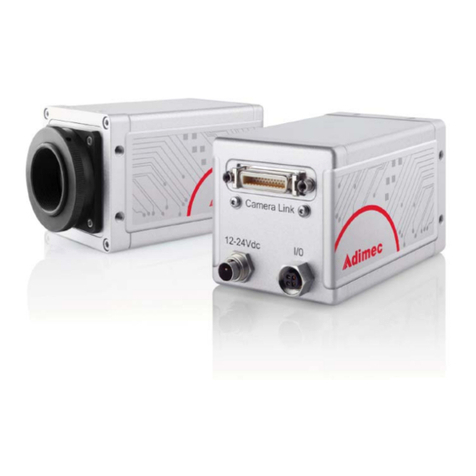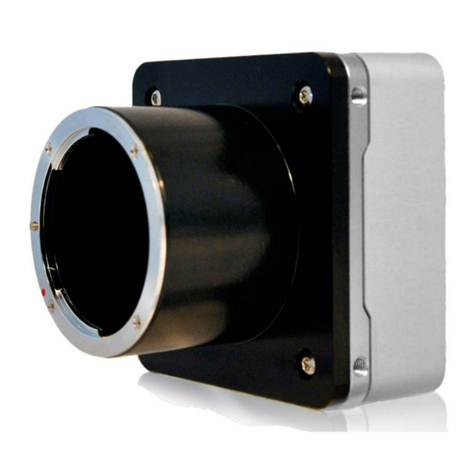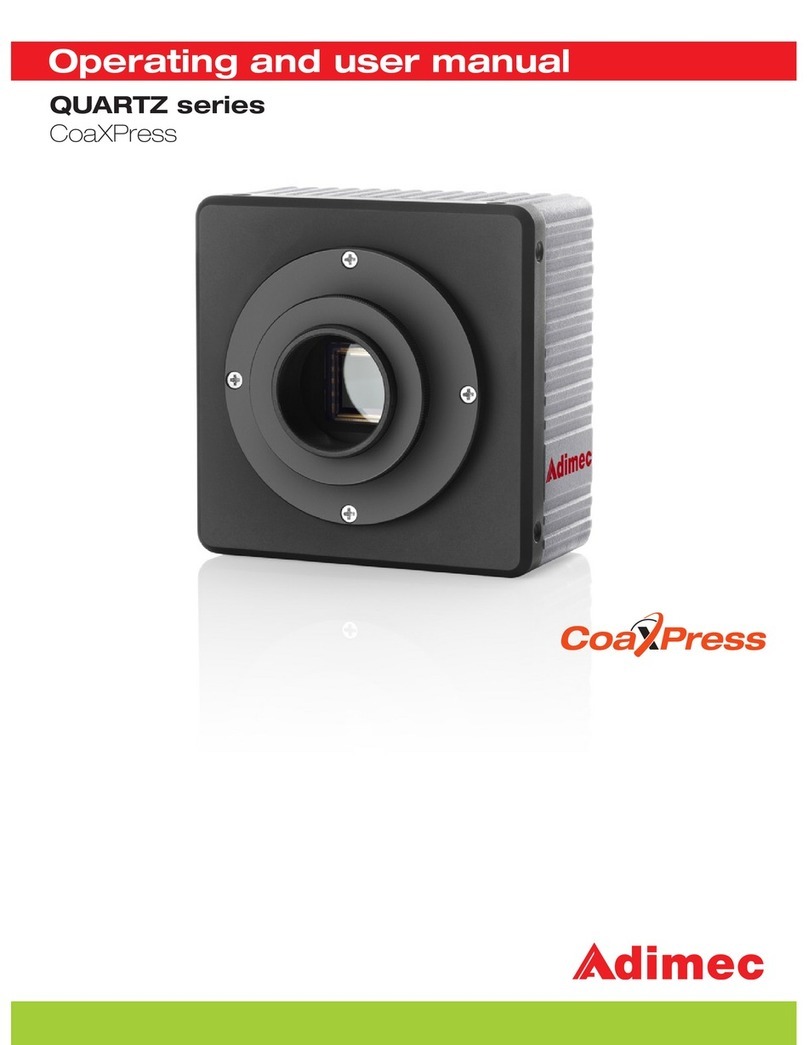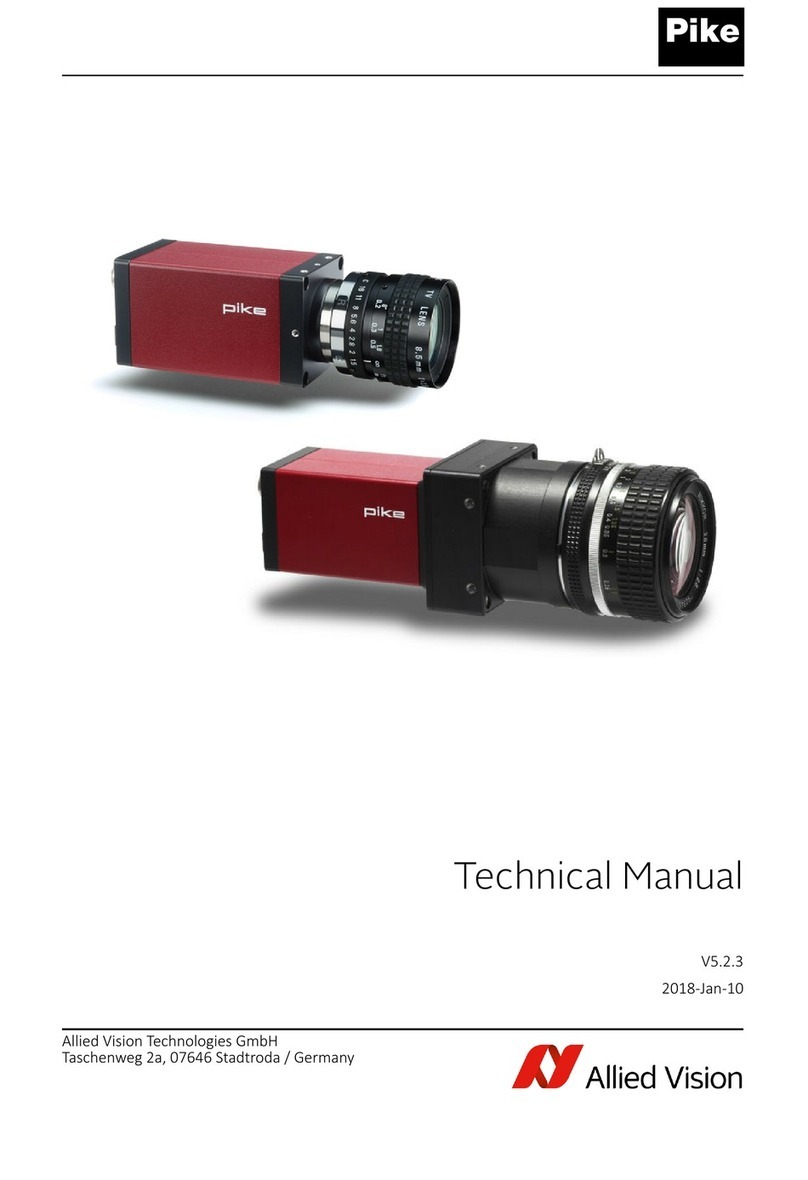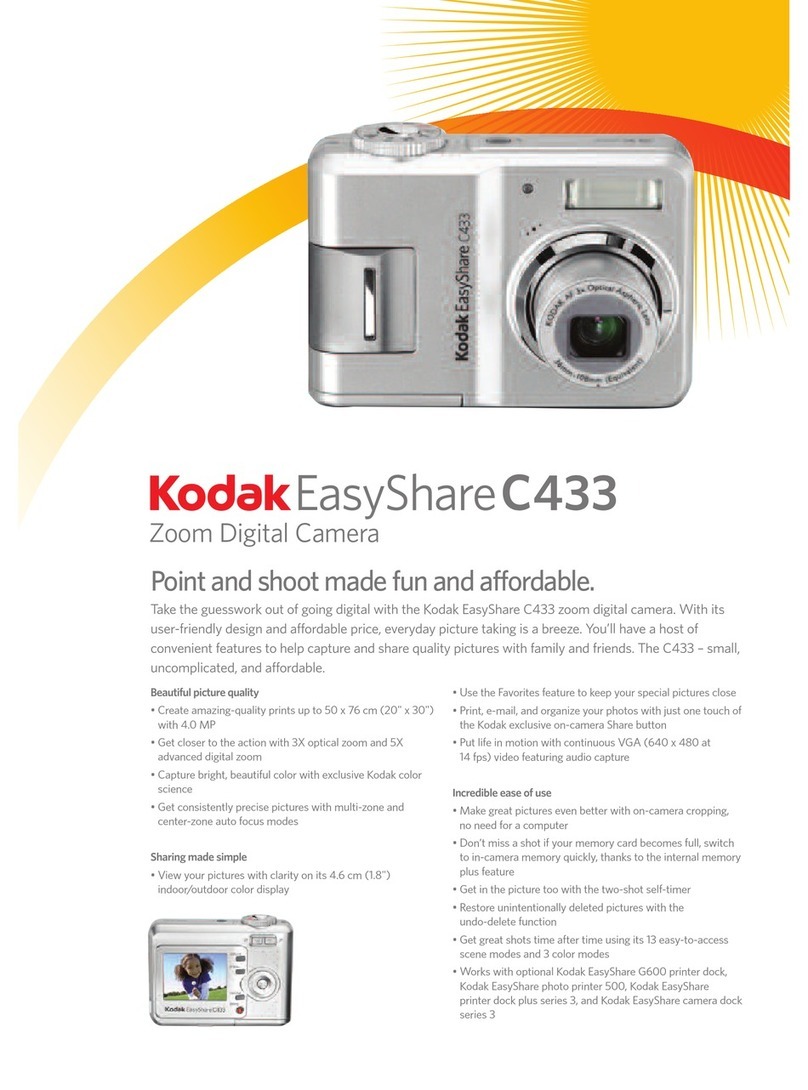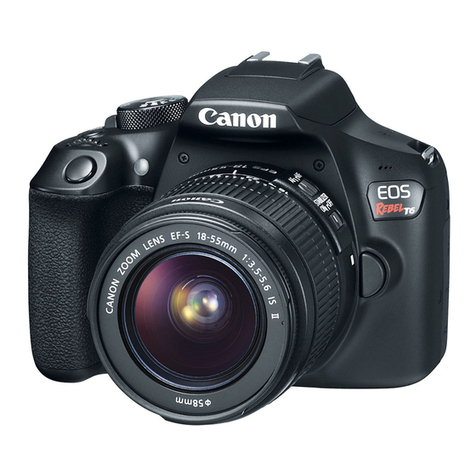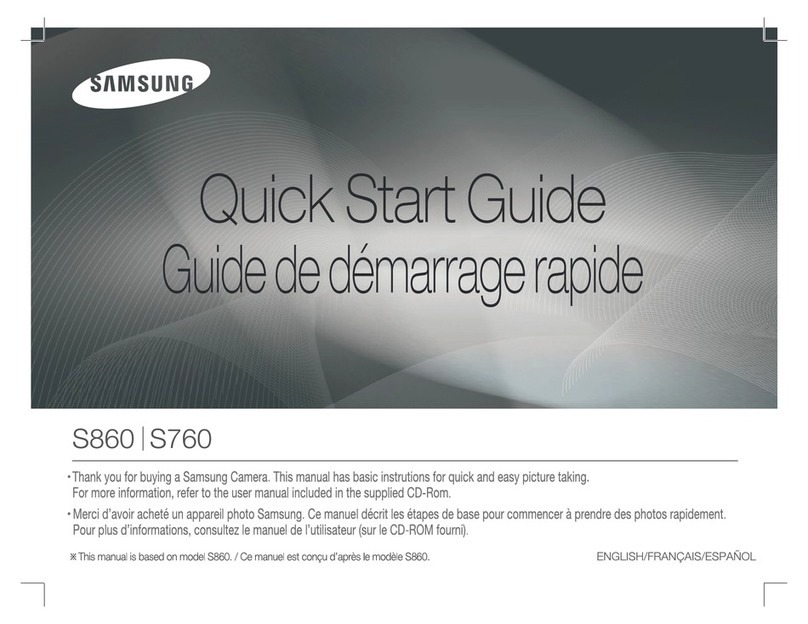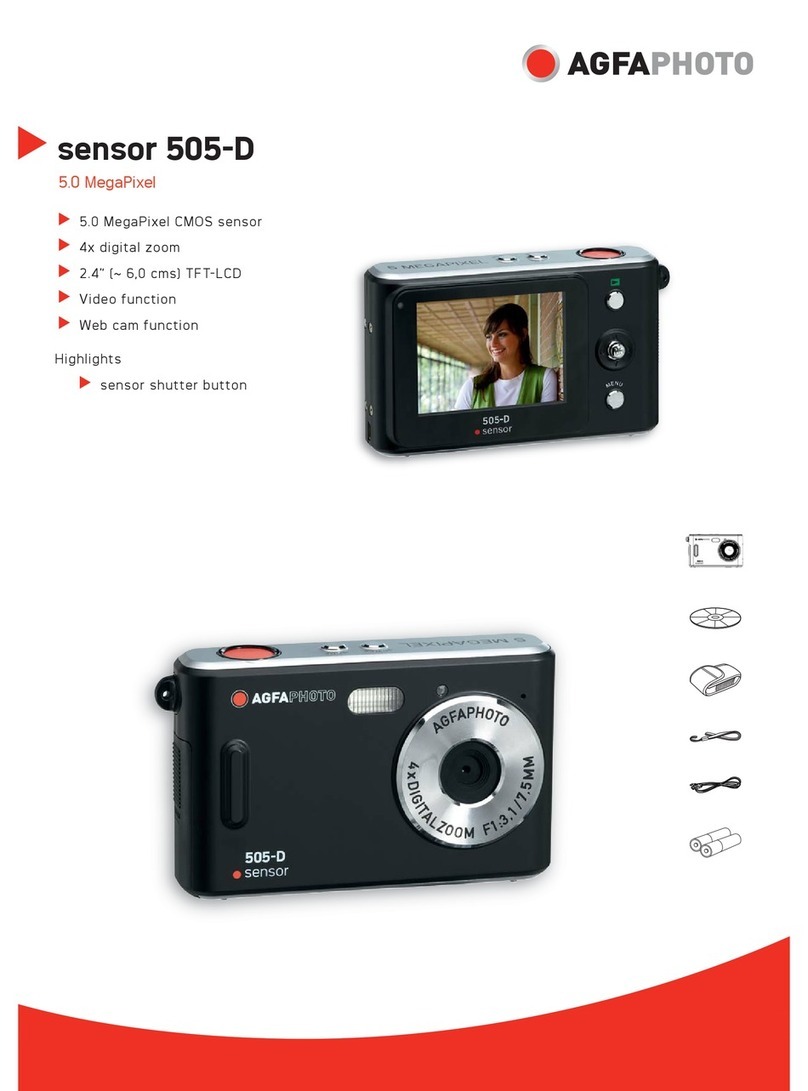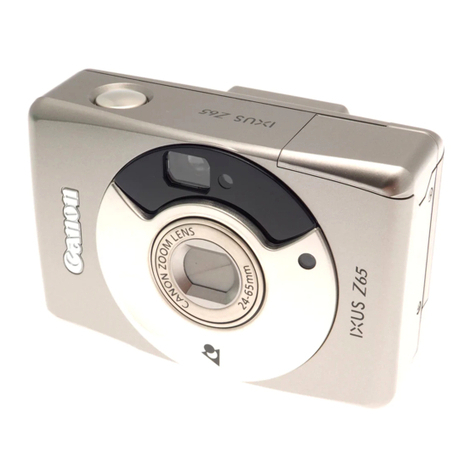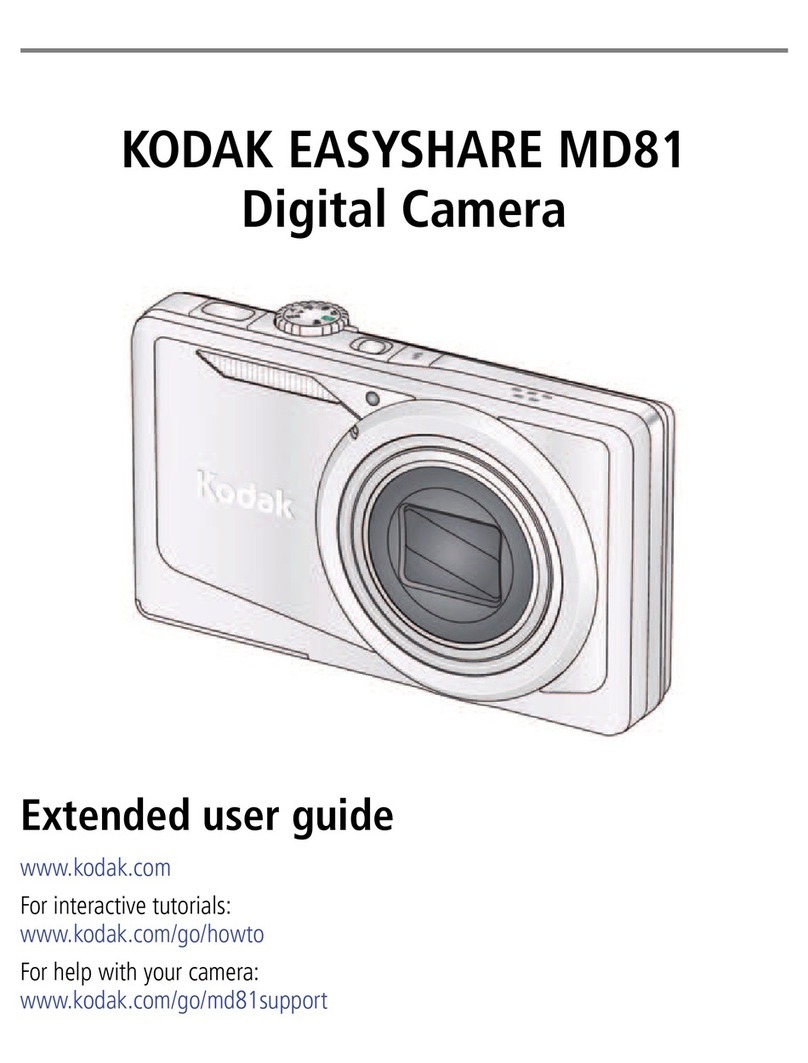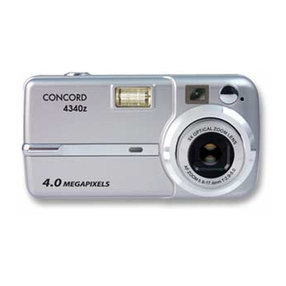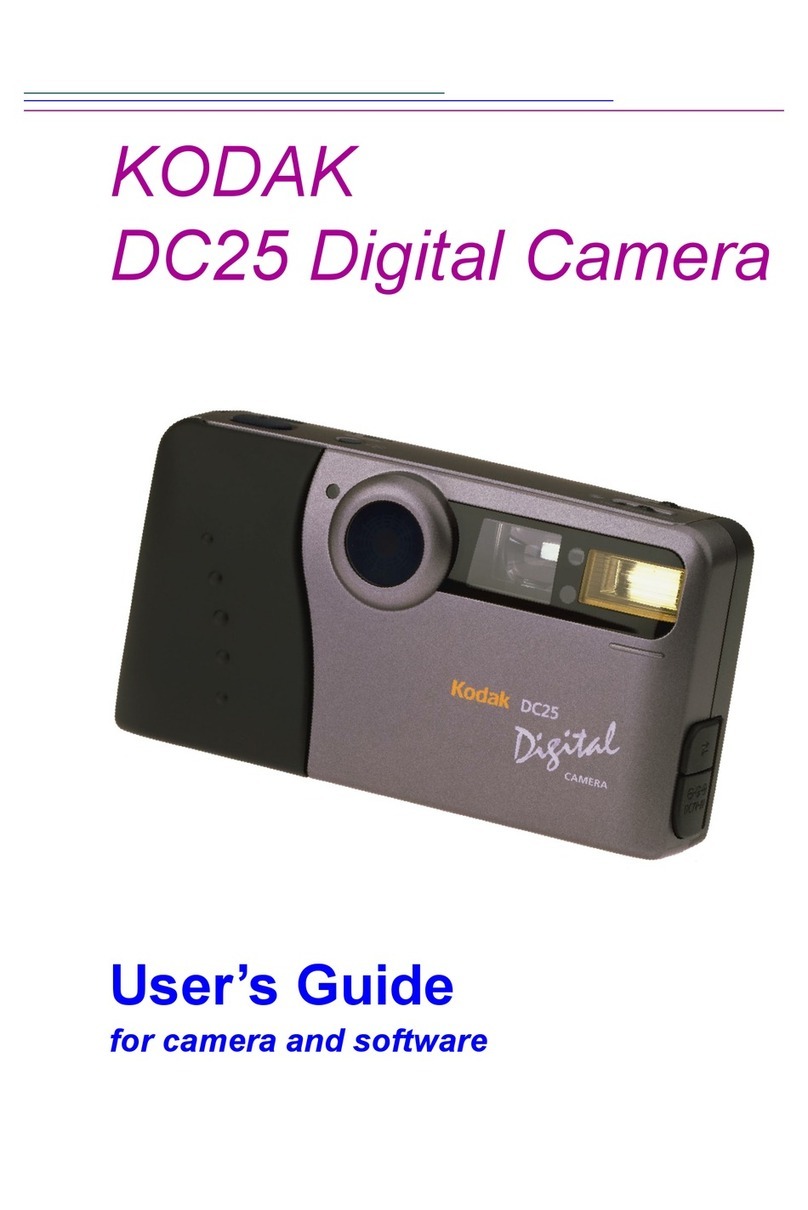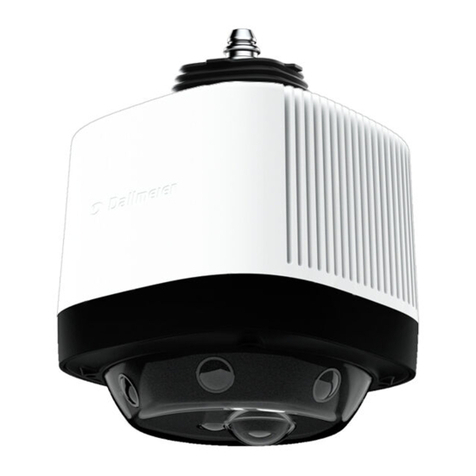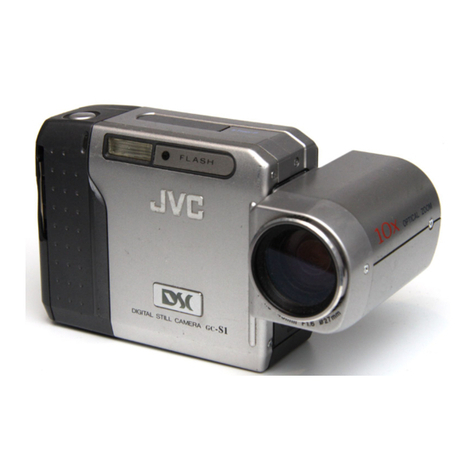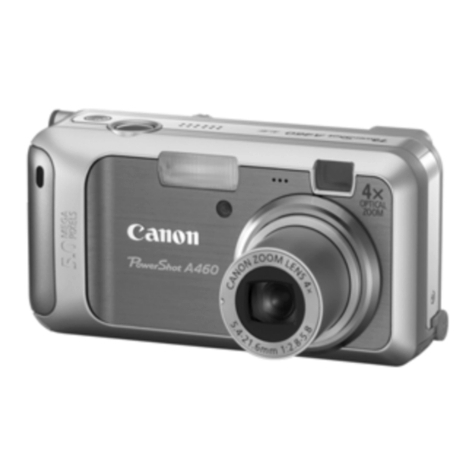Adimec Q-8V100 User manual

2012-03-29 Manual Q-8V100 and S-25A30 Rev. 0.1 preliminary
1
Manual
Rev. 0.1
Q-8V100 / S-25A30
Q-8V100m
Q-8V100c
S-25A30m
S-25A30c

2012-03-29 Manual Q-8V100 and S-25A30 Rev. 0.1 preliminary
2
About Adimec
Adimec is the leading supplier of high-performance digital camera modules and camera-lens
assemblies for use in three market segments: machine vision, medical imaging, and
applications for government purposes such as traffic and defense systems. In developing
our products as a partner to major OEMs around the world, we utilize the synergy between
these segments to shine in terms of image quality, speed, dynamic range and reliability.
Adimec is the only company in the market that weds the specific needs of its highly
demanding customers to its technological inventiveness, generating vision solutions of
exceptional quality. These industry-leading customer specials are the models for our
standard products.
Thanks to this unique approach, Adimec’s solutions add crucial competitive value to our
customers’ high-end systems and their applications, as they yield brilliant results to the users
of those systems.
The Netherlands-based holding company has business offices in Europe, the United States,
Japan, and Singapore. For more detailed information about Adimec and our products you
can visit our website www.adimec.com or you can contact your local dealer or the business
offices in your region:
• Adimec Advanced Image Systems B.V.
PO Box 7909
5605 SH Eindhoven
The Netherlands
Phone: +31 (40) 2353 920
Fax: +31 (40) 2353 905
E-mail: SalesEU@adimec.com
• Adimec Japan
2-10-3-103, Narimasu, Itabashi-Ku
175-0094 Tokyo, Japan
Phone: +81 (3) 5968 8377
Fax: +81 (3) 5968 8388
E-mail: SalesJP@adimec.com
• Adimec Electronic Imaging Inc.
PO Box 80529
Stoneham, MA 02180,
USA
Phone: +1 (781) 279 0770
Fax: +1 (781) 279 0571
E-mail: SalesUS@adimec.com
• Adimec Asia/Pacific
190 Middle Road, #17-06 Fortune Centre
Singapore 188979
Phone: +65 6334 1236
Fax: +65 6334 1436
E-mail: SalesAP@adimec.com

2012-03-29 Manual Q-8V100 and S-25A30 Rev. 0.1 preliminary
3
Table of contents
1. General Introduction ............................................................................................. 5
1.1. Product Highlights..................................................................................... 5
1.2. About this manual...................................................................................... 5
1.3. Standards.................................................................................................. 5
1.4. Liability 5
2. Precautions........................................................................................................... 7
2.1. Safety precautions..................................................................................... 7
2.1.1. General..................................................................................... 7
2.1.2. Safety symbols.......................................................................... 7
2.2. Handling.................................................................................................... 7
2.2.1. General..................................................................................... 7
2.2.2. Cleaning of the CMOS sensor................................................... 7
2.2.3. Cleaning of the camera............................................................. 8
2.2.4. Maintenance ............................................................................. 8
2.2.5. Repair and modification............................................................. 9
2.2.6. Peripheral equipment................................................................ 9
2.2.7. Mounting / Mechanical .............................................................. 9
3. installation........................................................................................................... 10
3.1. Electrical interface - power...................................................................... 10
3.1.1. I/O connector .......................................................................... 10
3.2. Camera Link interface connector............................................................. 11
4. Functional Characteristics................................................................................... 12
4.1. Overview................................................................................................. 12
4.2. Frame rates............................................................................................. 12
5. Control of the camera ......................................................................................... 13
5.1. Communication protocol.......................................................................... 13
5.1.1. Data link settings..................................................................... 13
5.1.2. Data flow characters ............................................................... 13
5.1.3. Message Format..................................................................... 13
5.1.4. Message acknowledgement.................................................... 14
5.1.5. Reply messages...................................................................... 14
5.1.6. Communication timing............................................................. 14
5.1.7. Host system requirements....................................................... 14
5.2. Camera Link interface standard............................................................... 14
5.2.1. Overview................................................................................. 15
5.2.2. Mechanics of clserial.dll .......................................................... 15
5.3. Camera Link ports assignment................................................................ 16
6. detailed functionality & control descriptions......................................................... 17
6.1. Camera Identification .............................................................................. 17
6.1.1. Internal temperature................................................................ 17
6.2. Camera configuration sets....................................................................... 17
6.3. Modes of operation.................................................................................. 18
6.3.1. Frame Period.......................................................................... 18
6.3.2. Integration Time...................................................................... 18
6.3.3. Trigger input and polarity selection.......................................... 18
6.4. Flash Strobe commands.......................................................................... 19
6.4.1. Flash strobe polarity................................................................ 19

2012-03-29 Manual Q-8V100 and S-25A30 Rev. 0.1 preliminary
4
6.4.2. Output Mode setting................................................................ 19
6.5. Defect pixel correction............................................................................. 20
6.5.1. Addition and removal of defect pixels...................................... 21
6.5.2. Restoring factory default defect pixel list ................................. 22
6.5.3. Defect pixel test mode............................................................. 22
6.6. Image data formatting ............................................................................. 22
6.6.1. Black level and offset .............................................................. 22
6.6.2. Digital fine gain ....................................................................... 22
6.6.3. White balance (color only)....................................................... 23
6.6.4. Output look-up table................................................................ 23
6.7. Output format and Camera Link settings................................................. 23
6.7.1. Region of interest.................................................................... 23
6.7.2. Camera link settings (taps and Lval-gap)................................ 24
6.7.3. Camera Link clock................................................................... 24
6.8. Service and Maintenance........................................................................ 24
6.8.1. Built-in test.............................................................................. 24
6.8.2. Error diagnosis........................................................................ 25
6.8.3. Cross hairs and test pattern .................................................... 25
6.8.4. Frame count and image tagging (not available in first
prototypes).............................................................................................. 27

2012-03-29 Manual Q-8V100 and S-25A30 Rev. 0.1 preliminary
5
1. GENERAL INTRODUCTION
This document describes the electrical and software interface of the Quartz Q-8V100 and
Sapphire S-25A30 cameras. Both are based on the ON Semi Vita25k sensor and available
in monochrome or Bayer color.
The mechanical interface is specified in separate mechanical outline drawings.
1.1. Product Highlights
Global shutter
8 Mp acquisition at 100 fps (Q-8V100)
25 Mp acquisition at 30 fps (S-25A30)
Camera Link 10 tap interface
1.2. About this manual
This manual provides the necessary information for setting up, operating and
troubleshooting the camera.
We strongly recommend reading this manual before you unpack or operate the camera.
The manual is applicable to the following models, color as well as monochrome, with
Camera Link interface:
Q-8V100 (Quartz)
S-25A30 (Sapphire)
Unless stated differently, all information in this manual is applicable to all camera versions.
1.3. Standards
Camera Link –Specification of Camera Link Interface Standard for Digital Cameras and
Frame Grabbers –Version 1.1 - January 2004.
1.4. Liability
Adimec puts in a lot of effort in preparing this manual. Please inform your Adimec Business
Office of any inaccuracies or omissions. Adimec Advanced Image Systems B.V. cannot be
held responsible for any technical or typographical errors and reserves the right to make
changes to the product and manuals without prior notice. Adimec Advanced Image Systems
B.V. makes no warranty of any kind with regard to the material contained within this
document, including, but not limited to, the implied
warranties of merchantability and fitness for a particular purpose. Adimec Advanced Image
Systems B.V. shall not be liable or responsible for incidental or consequential damages in
connection with the furnishing, performance or use of this material.
Layout, composing and editorial staff: Adimec Advanced Image Systems B.V.
Illustrations: Adimec Advanced Image Systems B.V.
All rights reserved. No part of this document may be reproduced, stored in a database or
retrieval system, or published in any other form or way, electronically, mechanically, by print,
photo print, microfilm or any other means without prior written permission from the publisher.
All correspondence regarding copyrights, translations:

2012-03-29 Manual Q-8V100 and S-25A30 Rev. 0.1 preliminary
6
Adimec Advanced Image Systems B.V.
PO Box 7909 Luchthavenweg 91
5605 SH Eindhoven 5657 EA Eindhoven
The Netherlands The Netherlands
Tel: +31 (40) 2353920
Fax: +31 (40) 2353905
URL: www.adimec.com
Publication number: xxxxxx Q-8V100_S-25A30 rev. 0.1
© Copyright 2011 Adimec Advanced Image Systems B.V. Eindhoven, The Netherlands.

2012-03-29 Manual Q-8V100 and S-25A30 Rev. 0.1 preliminary
7
2. PRECAUTIONS
NOTE: It is advised to include the text of this chapter in the assembly documents of the
system in
which the camera is used.
A CMOS sensor camera is a sensitive device. Please read the following precautions
carefully before
you continue unpacking or operating the camera.
2.1. Safety precautions
2.1.1. General
It is advised to unpack and handle the camera in a clean, ESD protected working area.
It is advised to read the whole manual before using the camera.
2.1.2. Safety symbols
The following safety symbols are applicable to and indicated on the camera.
Symbol for “Conformité Européenne”
The exclamation mark within an equilateral triangle is intended to alert the
user to the presence of important operating and maintenance (servicing)
instructions in the literature accompanying the instrument.
2.2. Handling
2.2.1. General
In order to prevent damage to the camera and to keep the CMOS sensor clean, please take
the following precautions.
Always keep the sensor cap in place, as long as no lens is attached.
Remove the lens cap just before the lens is screwed on the camera. It is advised to perform
this operation in a clean room or clean bench.
Never touch the CMOS sensor surface. The cover glass is easily damaged and the CMOS
sensor can be damaged by ESD (electrostatic discharge).
2.2.2. Cleaning of the CMOS sensor
Cleaning of a CMOS sensor is a rather difficult task. Depending on the aperture of the lens
used, any dust particles with a size of 10μand larger can show up in your image.
All cameras are checked for cleanliness in our factory before shipment. Proper handling
instructions during system assembly can prevent the CMOS sensor from getting
contaminated.
Should cleaning of the CMOS sensor be necessary follow the instruction below.

2012-03-29 Manual Q-8V100 and S-25A30 Rev. 0.1 preliminary
8
NOTE: that damage of the CMOS sensor due to scratches on the cover glass or
electrostatic discharge (ESD) is not covered by warranty!
The correct working environment for cleaning is essential in order to ease cleaning and to
prevent damage of the CMOS sensor.
Precautions:
Take precautions to prevent ESD that can damage the CMOS sensor.
Cleaning of the CMOS sensor, and assembly of the lens is preferably performed in a
clean room or clean bench.Never try to clean the CMOS sensor at a relative humidity
lower than 30 %. A relative humidity of 40 % or higher is preferred in order to
minimize the chance of damage due to ESD.
It is advisable to use an ionizer, in order to minimize the built-up of ESD.
Be sure to clean the lensmount of the lens before assembly.
Use non-fluffing Q-tips and Alcohol (or Hexane) for cleaning. De-ionized water may be
necessary to remove ionic contaminants like salts.
Any Q-tip should be used only once - you will otherwise move dirt from one place to
another.
Never dry rub the window. This may cause static charges or scratches that can destroy
the CMOS sensor.
Cleaning instructions:
1.First try to remove the contamination by using clean, dry air. (Use an ultra-filtered, non-
residue dust remover spray). Avoid blowing air into the screw thread of the
lensmount, because this may cause contamination on the CMOS sensor due to loose
particles and traces of oil or grease. If this step does not result in an acceptable
result, continue with step 2.
2.Remove the lensmount by unscrewing the 4 crosshead screws that hold the
lensmount.
3.Clean the inner screw thread of the lensmount using Alcohol or Hexane and a Q-tip.
4.Clean the CMOS sensor cover glass using Alcohol or Hexane and a Q-tip.
Gently and carefully rub the window always in the same direction, e.g. top to down.
5.Install the lensmount back on the camera front. Maximum tightening force may not
exceed 0.3 Nm.
6.Install a lens, power up the camera, set the lens at a small aperture (F16) and point the
lens at a bright source. Adjust gain and integration time if necessary.
7.Check the image on the monitor for dark spots and stripes caused by contamination on
the CMOS sensor cover glass. (Note that the image on the monitor should not
saturate due to over-exposure - if necessary close the iris even further).
8.If the CMOS sensor is not clean, repeat steps 4 - 7 using a new Q-tip. After three
unsuccessful tries, it is advised to wait a few minutes before a new attempt is made
to clean the CMOS sensor. (The waiting time allows the electric charge that has been
built up during cleaning to neutralize).
2.2.3. Cleaning of the camera
The camera shall NEVER be immersed in water or any other fluid. For cleaning, only use a
light moist tissue.
2.2.4. Maintenance
No specific maintenance other than cleaning is applicable.

2012-03-29 Manual Q-8V100 and S-25A30 Rev. 0.1 preliminary
9
2.2.5. Repair and modification
Repair, modification and replacement of parts shall be done only by Adimec to maintain
compliance
with the directive 89/336/EEC electromagnetic compatibility and directive 72/23/EEC low
voltage directive and the international standards.
2.2.6. Peripheral equipment
For safety, use an external SELV qualified power supply. Maximum current 1 A.
For safety, peripheral equipment must either be double isolated or SELV qualified.
2.2.7. Mounting / Mechanical
Connectors
Take care during handling of the camera. The Camera Link connector and the power
connector should not be damaged.
The maximum tightening torque for the Camera Link connector may not exceed 0.26 Nm.
Prevent the entry of foreign objects or dirt into the connectors, as this will result in unreliable
operation or damage.
Mounting screws
Take notice of the maximum length of the screws that may be used for mounting of the
camera. Using screws too long can cause damage to the camera. Maximum screw length: 5
mm.

2012-03-29 Manual Q-8V100 and S-25A30 Rev. 0.1 preliminary
10
3. INSTALLATION
In this chapter all three electrical interfaces as well as the mechanical and optical interface
are described. If a lens and all interfaces are available, it is possible to refer to the quick start
paragraph at the end of this chapter. The other paragraphs describe the interfaces in detail.
3.1. Electrical interface - power
Connector type: Hirose type HR10A-7R-6PB(74)
Mating connector: Hirose type HR10A-7P-6S(74)
Figure 3.1: Pin type on camera
Pin
number
Function
1, 21
10-24 Vdc
3, 4
Not Connected
5, 61
DC GND
1tied together inside of the camera
3.1.1. I/O connector
An input for external triggering of the camera as well as control of an external flash light is
available at the I/O connector.
The input and output are fully programmable. For reference see paragraph [TBD].
The input and output are galvanic isolated from the internal camera electronics by means of
an optocoupler (Vishay type SFH6156-2).
Connector type: Hirose type HR10A-7R-4PB(74)
Mating connector: Hirose type HR10A-7P-4S(74)
Figure 3.2: Socket type on camera
Pin
number
Function
1
Trigger in
2
Flash strobe out
3
Trigger return
4
Flash strobe return
The delay from non-conductive to conductive state of the phototransistor is less than 1.5 μs.
The delay from conductive to non-conductive state of the phototransistor is less than 10 μs.
The recommended termination circuitry is drawn in Figure 3.3.
4
2
3
1
4
5
2
3
6
1

2012-03-29 Manual Q-8V100 and S-25A30 Rev. 0.1 preliminary
11
Figure 3.3: I/O-interface schematic
A current of 2.5 mA is recommended for the Flash strobe output. For the Trigger input, a
current of 10 mA is recommended. These current recommendations translate to the
recommended series resistor values in table 3.4.
Recommended series resistor (2.5 mA flash strobe; 10 mA trigger input):
Vext [V]
R1E [Ω]
R2E [Ω]
3.3
1000
Do not apply
5.0
2000
0
12
4700
470
3.2. Camera Link interface connector
The Camera Link interface is designed to connect the camera to a frame grabber in order to
transfer video to the grabber as well as control data from the grabber to the camera. The
maximum cable length is 10 meter, for a 85MHz interface however 5 meter is recommended.
For a description of the Camera Link interface please refer to the Camera Link specification.
NOTE: PoCL (Power over Camera Link) is not supported. When connecting the camera to a
PoCLcompliant frame grabber, the PoCL-function must be disabled.
NOTE: The Q-8V100 and S-25A30 support only Camera Link 8 tap and 10 tap configuration.
This requires two equivalent cables (i.e. of the same length and preferably the same brand
and type number).
Interface connectors: 3M MDR 26-pins.
Standard Camera Link cables can be ordered at Adimec.

2012-03-29 Manual Q-8V100 and S-25A30 Rev. 0.1 preliminary
12
4. FUNCTIONAL CHARACTERISTICS
4.1. Overview
The Q-8V100 and the S-25A30 are direct pipeline cameras (acquisition and transmission are
not decoupled through a memory).
They support various acquisition modes, basic processing functions, region of interest,
defect pixel correction and some service and GPIO functionality.
The communication protocol and structure is described in Chapter 5; the commands for
specific functionality are treated in Chapter 6.
4.2. Frame rates
The maximum speed of the camera at 8Mp ROI resolution is indicated in the table below.
Type
H (pix)
V (pix)
CL taps
CL f [MHz]
Max fps
Q-8V100
3320
2490
8
85
80
Q-8V100
3320
2490
10
85
100
Besides the number of CL taps, the speed depends on the resolution and camera link
settings.
The exact equations in order to calculate speeds for other settings will be added later.

2012-03-29 Manual Q-8V100 and S-25A30 Rev. 0.1 preliminary
13
5. CONTROL OF THE CAMERA
The Quartz cameras are fully software controlled via the Camera Link serial channel using a
simple ASCII based protocol.
It is possible to save settings as ‘power-up default settings’ in the camera.
A command line control application is available to interactively control the camera settings.
Please contact your local Business Office to obtain a copy of the latest release.
Although this is an easy way of changing camera settings, it is also possible to communicate
with the camera using self deployed software. Please refer to chapter 5.2 for the
communication protocol.
Use chapter 6 as a detailed reference of the control commands.
5.1. Communication protocol
The camera is controlled by a host system connected to the Camera Link interface using the
serial communication link of the Camera Link. Commands and resulting data are transferred
between the host system and the camera by means of a communication protocol. The host
system is the master in the communication link. All actions are initiated by the host system.
The camera only replies to a message received from the host system.
5.1.1. Data link settings
The data link set tings that shall be used for communication with the camera are:
Baud rate 57600 baud
stop bit 1
data bit 8
parity none
handshaking none
5.1.2. Data flow characters
The communication protocol uses data flow control characters to identify a message and for
acknowledgement.
The following data flow characters are defined:
CHAR
DEC
Description
NUL
0
NUL character, is ignored
STX
64
Start of message identifier
ETX
13
End of message identifier
ACK
6
Positive acknowledgement
NAK
21
Negative acknowledgement
5.1.3. Message Format
Command and data are packed in a message. A message starts with the STX character
followed by the message content. The message ends with an ETX character. The characters
allowed in the message content range from decimal 32 to 255.
Format: STX <message content> ETX

2012-03-29 Manual Q-8V100 and S-25A30 Rev. 0.1 preliminary
14
5.1.4. Message acknowledgement
After receiving a message, the camera responds with an acknowledgement character. This
can be an ACK character (positive acknowledgement) or a NAK character (negative
acknowledgement).
The ACK response is given when the received message was understood (the content of the
message is not considered).
The NAK response is given when the received message was not understood, which may be
the case when invalid characters are received as message content, or the message
overruns the camera receiver buffer capacity.
5.1.5. Reply messages
When a message is sent to the camera that requires data to be transmitted back to the host
system, this data is packed in a message and is sent to the host system after the positive
acknowledgement (ACK) character. When the camera responds with a NAK character no
data is send back to the host system.
5.1.6. Communication timing
The time between the successive characters making up a message is not limited. The
camera however, when transmitting a message to the host system, has a time interval
between successive characters of less than the time required for a single character to be
transmitted.
5.1.7. Host system requirements
After transmitting a message to the camera, the host system must wait for the camera to
reply with an ACK or NAK character. To prevent lock-up, the wait time for the response must
be limited by a timeout period. After not receiving an ACK or NAK character after the time-
out period has elapsed, the host system must consider the transmitted message as not
being received.
The time-out time to be used for the camera should be at least 200 ms.
Under normal conditions, a NAK or no response from the camera results from damage of the
transmitted characters due to noise or communication link hardware problems. In such case,
the host system should transmit the message again. The number of repeated transmissions
after a NAK response or no response must be limited by a retry count to prevent lock-up.
If the camera is still responding with a NAK character after the maximum number of retries of
the transmitted message have been sent, the communications channel should be
considered malfunctioning or too noisy.
When the maximum number of retries of the transmitted message has been reached and the
camera is still not responding, the communication channel should be considered
disconnected or the camera not being powered or malfunctioning.
5.2. Camera Link interface standard
Without getting into detail on the Camera Link standard, this section discusses the
mechanics of the serial communication channel.

2012-03-29 Manual Q-8V100 and S-25A30 Rev. 0.1 preliminary
15
Available Camera Link serial software enhancements in the form of Dynamic Link Library
files will greatly simplify the setup of a communication channel.
Both camera manufacturers and frame grabber vendors have issued these DLL files which
will provide standard C, API and native Visual Basic support, so that applications written in C
or Visual Basic can communicate serially with Camera Link cameras.
5.2.1. Overview
The user application calls into the generic clserial.dll, which dynamically loads the.dll file(s)
specific to the frame grabber(s) referred to by the application. It then routes all calls to that
.dll file. The following diagram illustrates this sequence:
Features Provided by clserial.dll
Simultaneous, multi-port (including cross vendor) support
Support for binary or text based data transfers
Common API across vendors
Common error codes across vendors
Common error text across vendors
Strict, well defined behavior of all functions in specification
Openness to vendor specific error codes and text
Ability to enumerate ports on sytem
Inquireable/adjustable baud rate for ports
Win 32 support (open source for port to other platforms)
C/C++ support through import library
VisualBasic support through type library
Backwards compatibility with recommended specification of October 2000
Standard default communication settings for serial port
5.2.2. Mechanics of clserial.dll
When clserial.dll loads, it searches the operating system’s system directory (for example,
C:\windows\system or c:\winnt\system) for all files that use the naming convention
clserxxx.dll (xxx is uniquely assigned to AIA member companies). Clserial.dll then
dynamically loads those .dll files and queries each one for its manufacturer name and port
names. This action produces a list of all possible ports.

2012-03-29 Manual Q-8V100 and S-25A30 Rev. 0.1 preliminary
16
The application can then select which port or ports it would like to communicate through. The
required manufacturer specific .dll files will be loaded and clserial.dll will manage passing the
application calls to the appropriate .dll for the application specified port.
Further details can be found in the Camera Link –Specification of Camera Link Interface
Standard for Digital Cameras and Frame Grabbers –Version 1.1 - January 2004.
5.3. Camera Link ports assignment
Only Camera Link full configuration is available in this camera, in 8 or 10 taps.
The format is horizontally interleaved.

2012-03-29 Manual Q-8V100 and S-25A30 Rev. 0.1 preliminary
17
6. DETAILED FUNCTIONALITY & CONTROL
DESCRIPTIONS
6.1. Camera Identification
The camera identification string can be queried by the following command:
Command Syntax: ID?
Return message: “Q-8V100x/CL S/N:yyyyyy
“S-25A30x/CL S/N:yyyyyy
Here x indicates the type: “m” for monochrome or “c” for (bayer) color.
yyyyyy is the serial number of the camera.
The serial number can be queried individually by:
Command Syntax: SN?
Return message: “yyyyyy
Where yyyyyy is again the serial number.
Furthermore, the camera link Build State can be queried by:
Command Syntax: BS?
Return message: “x.xx;y.yy;z,zz
x.xx is the camera issue
y.yy is the micro controller firmware version
z.zz is the FPGA firmware version.
6.1.1. Internal temperature
Command Syntax: TM?
The internal temperature is returned in units of 10C.
6.2. Camera configuration sets
The factory default values of all settings are restored by:
Command Syntax: FD
In addition, user settings can be stored by:
Command Syntax: SC
The settings stored in the user set are loaded all at once by:
Command Syntax: LC
The camera can be rebooted by:

2012-03-29 Manual Q-8V100 and S-25A30 Rev. 0.1 preliminary
18
Command Syntax: YC
6.3. Modes of operation
The camera can be operated in one of 3 control modes or in continuous (free run) mode.
The mode is set by:
Command Syntax: MOx
MO?
x
Mode
0
Continuous mode (free run)
Camera is master; frame period and integration time fixed and configurable by
commands.
1
Control mode
Camera is slave; both frame period and integration time determined by trigger pulse
(either Camera Link CC pulse or external trigger).
2
Sync Control mode
Camera is slave; start and stop of integration determined by start of trigger (either
Camera Link CC pulse or external trigger). The frame period equals the integration
time.
3
Timed Trigger control mode
Camera is slave; start of integration determined by start of trigger (either Camera
Link CC pulse or external trigger). Integration time configurable by command.
6.3.1. Frame Period
In Continuous mode (MO0), the frame period is configurable by:
Command Syntax: FPx
FP?
x is the frame period in units of 1 μs, ranging to 100,000 maximum. The minimum depends
on various settings but can always be found by FP0, after which the actual minimum can be
queried by FP?.
6.3.2. Integration Time
In Continuous mode (MO0) and Timed Trigger control mode (MO3), the integration time is
configurable by:
Command Syntax: ITx
IT?
x is the integration time in units of 1 μs, ranging from 1 to 100,000. The camera automatically
clips to the maximum value for the set frame period.
6.3.3. Trigger input and polarity selection

2012-03-29 Manual Q-8V100 and S-25A30 Rev. 0.1 preliminary
19
In the control modes (MO1, MO2, MO3) the trigger can be either a Camera Link CC pulse or
the external trigger. This is configurable by:
Command Syntax: CCEx;y
CCE?
x is the source:
x
Trigger source
0
CC1
1
CC2
2
CC3
3
CC4
4
External trigger
y is the trigger polarity:
y
Trigger source
0
normal (rising edge triggers start of integration)
1
Inverted (falling edge triggers start of integration)
6.4. Flash Strobe commands
The camera is equipped with strobe output signal on the I/O connector. The strobe can be
switched on or off by means of the FSE command.
Command Syntax: FSEx
FSE?
With x=0, the flash strobe is disabled, with x=1 it is enabled.
6.4.1. Flash strobe polarity
The active state of the strobe output can be inverted to adapt to the application
requirements.
Command Syntax: FSPx
FSP?
where x=1 for the normal polarity: in this polarity configuration the photo transistor at the
camera output is conductive during the active state of the strobe.
If x=0 the strobe photo transistor is non-conductive during the active state of the strobe.
6.4.2. Output Mode setting
The strobe output can be operated in two different modes, which are set through the FSM
command.
Command Syntax: FSMx
FSM?

2012-03-29 Manual Q-8V100 and S-25A30 Rev. 0.1 preliminary
20
x=0 for the automatic mode: The strobe will become active during the integration time
(regardless operating mode MOx)
x=1 for the programmed mode; both delay time after start of integration as well as the
duration of the active state is programmed.
Note that a flash strobe length that extends after the end of integration time is not possible.
The camera will end the flash strobe automatically.
The timing can be programmed:
Command Syntax: FSTx;y
FST?
x is the delay between start of integration and the transition of the flash strobe to the active
state. y is the length of the flash strobe active state. Both x and y are in units of 1 µs and
range from 0 to 100,000.
Both are without the additional intrinsic response delay of the flash strobe which is
mentioned in section 3.1.1.
6.5. Defect pixel correction
A defect correction is available that replaces a defect pixel by a weighted average of those
its 4 adjacent pixels that are not defect. The neighbors are labeled N, S, E, and W in figure
6.1. Their weights are listed in table 6.1 for the possible situations.
Figure 6.1: Surrounding of defect pixel
#
Is defect:
Weight of adjacent pixel:
N
S
E
W
kN
kS
kE
kW
0
0
0
0
0
1/4
1/4
1/4
1/4
1
0
0
0
1
1/4
1/4
1/2
0
2
0
0
1
0
1/4
1/4
0
1/2
4
0
1
0
0
1/2
0
1/4
1/4
8
1
0
0
0
0
1/2
1/4
1/4
3
0
0
1
1
1/2
1/2
0
0
5
0
1
0
1
1/2
0
1/2
0
6
0
1
1
0
1/2
0
0
1/2
9
1
0
0
1
0
1/2
1/2
0
10
1
0
1
0
0
1/2
0
1/2
12
1
1
0
0
0
0
1/2
1/2
N
S
E W?
0 1-1
0
1
-1
This manual suits for next models
1
Table of contents
Other Adimec Digital Camera manuals
